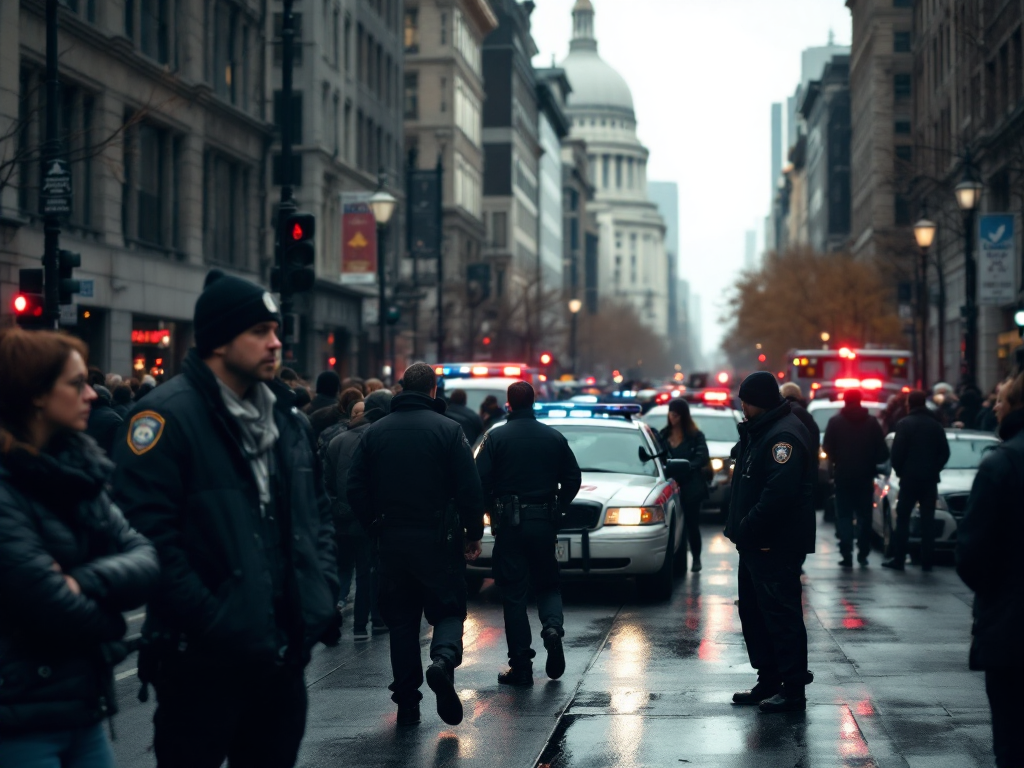Incident Leaves Seven Injured
A mass stabbing incident occurred Thursday afternoon near the U.S. Capitol in Northeast Washington, D.C., leaving at least seven people hospitalized. The attack took place around 3:45 PM in a populated residential and commercial area near Montello Avenue and Meigs Place NE, close to landmarks such as Gallaudet University. Initial emergency calls indicated a severe situation, prompting rapid responses from both neighbors and authorities.
Witness accounts describe the suspect initially attacking a female acquaintance and subsequently stabbing two Good Samaritans who intervened. The violence spilled into the streets, alarming local residents and business owners. Neighborhood residents proactively subdued the attacker before the arrival of law enforcement, showcasing remarkable courage and community spirit.
“We didn’t just call police and wait for them,” witness Salvador Saucedo Guzman reported, emphasizing the community’s decisive action. “The neighbors actually physically did it themselves.”
The assailant, described as experiencing severe mental distress, reportedly inflicted injuries upon himself as well as others, indicating the incident was rooted in a profound mental health crisis. Authorities confirmed the suspect is among those hospitalized, although specific details regarding his condition remain unclear.
Authorities and Community Response
Following the incident, the Metropolitan Police Department (MPD) quickly secured the area, closing streets from the 1300 to 1600 blocks of Montello Avenue NE as homicide detectives investigated. Though initially believed to involve serious injuries, MPD spokesman Tom Lynch said, “So far, no one has died,” a statement that provided at least some relief amid the disturbing events.
The Metropolitan Police Department’s official statement on their social media accounts indicated they were actively responding to reports of “numerous people stabbed,” highlighting the perceived scale and urgency during the initial stages of the emergency.
Police have not released the identity of the suspect or detailed the specific charges he might face. The motives behind his sudden violent actions remain unclear, though preliminary investigations suggest severe mental health episodes as a significant factor.
The quick community intervention likely prevented further harm and potential fatalities. Residents and local business owners demonstrated impressive coordination and bravery, stepping in during daylight hours when foot traffic in this urban neighborhood was presumably high due to shops and eateries nearby.
In the immediate aftermath, emergency medical teams swiftly moved the injured to nearby medical facilities. At least one victim was reportedly unconscious at the scene and in critical condition; the status of other victims has not yet been released publicly, and authorities continue to assess their injuries.
“The immediate response from our residents undoubtedly minimized further harm,” said a Metropolitan Police Department official in a briefing following the incident.
Historical Context and Implications
Mass stabbing incidents, while relatively less common than shootings, draw attention to broader societal issues such as mental health support and community violence prevention strategies. Washington, D.C., has faced challenges related to mental healthcare access, and incidents like this underscore the necessity for robust mental health systems and community-based interventions.
Historically, Northeast D.C. encompasses diverse urban communities, evolving through periods of economic and social change. The immediate area surrounding the incident, characterized by small businesses, residential homes, and proximity to institutions like Gallaudet University, often experiences an active street life. This setting can exacerbate the impact of sudden violent incidents, both emotionally and economically, highlighting the vulnerability of similar urban neighborhoods nationwide.
The stabbing near such prominent landmarks also renews attention to public safety concerns in the nation’s capital. Recently, federal initiatives have intensified efforts to tackle rising crime rates across D.C., reflecting a broader strategy from law enforcement and policymakers to maintain safety and control urban violence.
According to crime statistics from MPD, violent crimes in the broader D.C. area have experienced fluctuations in recent years, prompting aggressive citywide and federal approaches to crime reduction. Community engagement initiatives and increased police patrols form part of these efforts, aimed at building safer neighborhoods through combined action from residents and authorities.
Thursday’s mass stabbing will likely strengthen calls for enhanced mental health initiatives and community safety programs, emphasizing the urgency of comprehensive responses to similar unpredictable events. Policymakers and community leaders may leverage this incident as a critical example of the importance of proactive mental health care reform as part of public safety measures.
Residents remain vigilant and reflective, contemplating adjustments to neighborhood safety measures. Meanwhile, authorities continue their investigations, and the community begins the process of healing and recovery, emphasizing collective resilience and preparedness against future threats to public safety.


